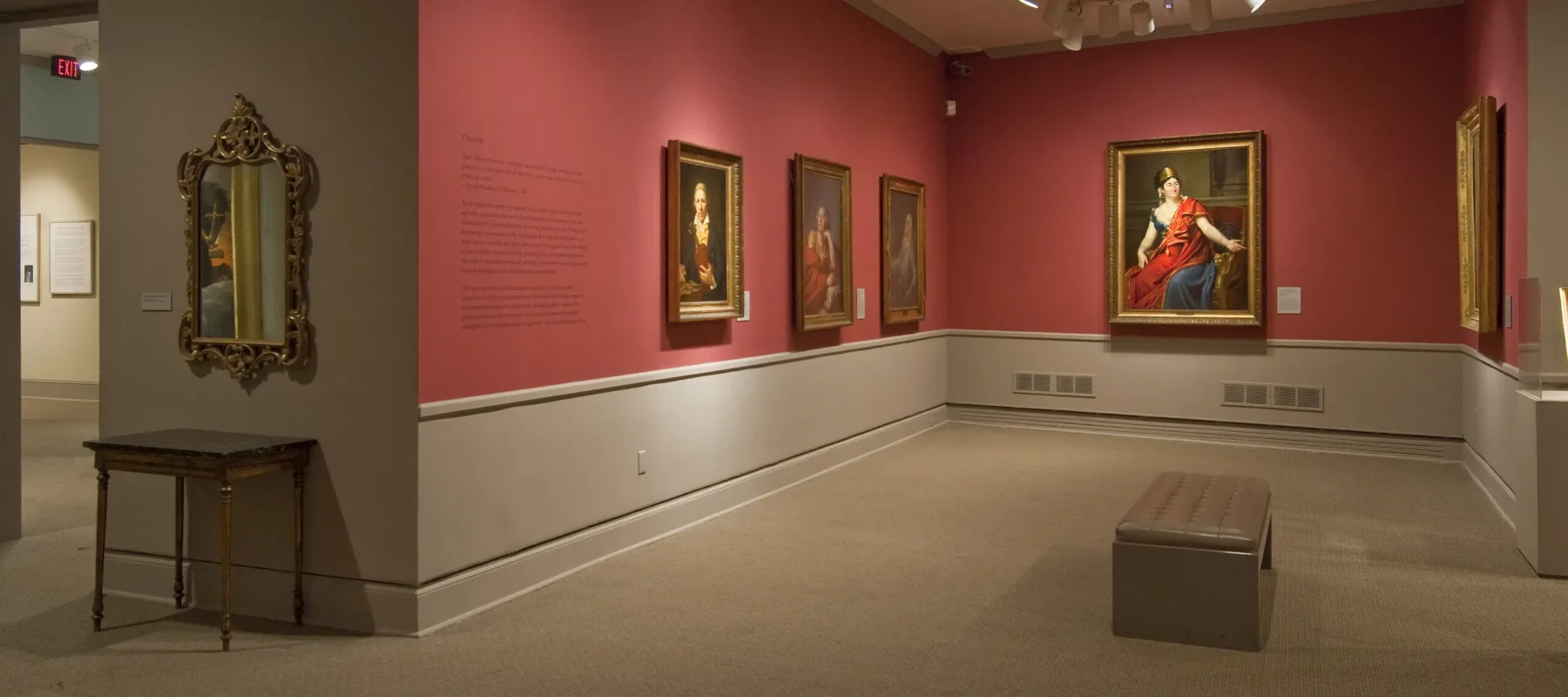
In Royalists to Romantics: Women Artists from the Louvre, Versailles, and Other French National Collections, 77 works by 35 artists display the talents of French Revolution-era women artists. Their paintings are windows into their careers and the singular challenges of their time. The catalogue that NMWA has published to illustrate Royalists to Romantics includes essays as well as individual artist biographies that give insight into the lives of women artists working in France between 1750 and 1848. This excerpt explores the life of one the show’s featured artists, Marguerite Gérard.
Marguerite Gérard has always been closely associated with the renowned Rococo painter Jean-Honoré Fragonard (1732–1806). Gérard, the youngest of seven children, was living in Paris when her mother died, in 1775.¹ Rather than join her father, a perfume maker, in her native Grasse, Gerard entered the household of her sister Marie-Anne, a painter of miniatures who was married to Fragonard.
Gérard quickly became a full-fledged member of Fragonard’s studio. Her earliest signed works are engravings after paintings by Fragonard; the 1778 Honoring the Genius of Franklin, included in the current exhibition, ranks among them. Her brother Henri also joined the workshop as an engraver, but Marguerite alone pursued oil painting. Following a traditional studio model, she made her first forays into the medium as small contributions to her teacher’s canvases. In the 1780s, however, she and Fragonard developed a more unusual collaborative process. Together they produced midsize genre scenes painted in a style reminiscent of that of the seventeenth-century Dutch masters, such as Gerard Ter Borch (1617–1681) and Gabriel Metsu (1629–1667), who were enjoying a surge in popularity in late-eighteenth-century Paris.

By the eve of the French Revolution, Gérard was widely admired, but she did not participate in the open Salons until 1799. She would send some forty-two paintings to eleven Salon exhibitions between 1799 and 1824.² Three received awards, and one, The Clemency of Napoléon (1808 Salon), was purchased by the emperor. She also pursued book illustration, providing six images for a 1796 edition of Choderlos de Laclos’s libertine novel, Les liaisons dangereuses. The paintings by Gérard on view in the present exhibition exemplify her oeuvre.
The portrait of the architect Claude-Nicolas Ledoux and the presumed portrait of the painter Jean-Jacques Lagrenée belong to a series of at least thirty-five portraits of painters, actors, and patrons that Gérard produced between 1787 and 1791.³ Intimate portraits intended to be viewed by friends and family, these works offer full- length views of casually posed subjects presented with attributes of their occupation: an architectural plan in the portrait of Ledoux and a canvas in the portrait of Lagrenée. The genre paintings included here are also typical, with three depicting the scenes of maternal domesticity for which Gérard is best remembered.⁴ The Presumed Portrait of Mesdames Tallien and Recamier hovers between portraiture and genre painting, featuring a touching scene of female companionship—another important theme in Gérard’s work.⁵
Notes
1. Although traditional accounts assert that Gérard traveled to Paris after the death of her mother, Carole Blumenfeld has unearthed unpublished documents that place the family in Paris upon the mother’s death. Carole Blumenfeld, “Marguerite Gérard et ses portraits de société,” in Marguerite Gérard: Artiste en 1789, dans l’atelier de Fragonard, exh. cat. (Paris, 2009), p. 8. Except where noted, all information herein is drawn from this catalogue.
2. French Painting, 1774 – 1830: The Age of Revolution, exh. cat. (Detroit, 1975), p. 440.
3. This series forms the focus of Blumenfeld, “Marguerite Gérard,” pp. 17–40. The Ledoux and Lagrenee are discussed in Marguerite Gérard, pp. 78, cat. no. 8, 105, cat. no. 21, respectively.
4. On the popularity of this theme, see Carol Duncan, “Happy Mothers and Other New Ideas in French Art,” The Art Bulletin 55, no. 4 (December 1973), pp. 570–83.
5. The role of female intimacy in Gérard’s oeuvre is discussed in Mary D. Sheriff, “Gérard, Marguerite,” in Dictionary of Women Artists, ed. Delia Gaze (London, 1997), vol. 1, pp. 580–82.
